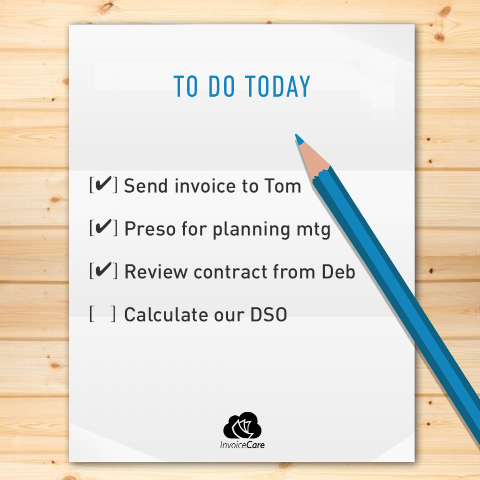Every industry has its own set of acronyms. Medicine has terms like ER. The tech industry has CPU. And for anyone who deals with collecting customer payments, we have DSO.
Days Sales Outstanding, or DSO for short, is one of the most useful barometers for understanding a business’s financial health. It’s also one of the primary business metrics we’re helping businesses take command of here at InvoiceCare.
If you’re new to DSO, read on to understand how it works and what it means for your business. And if you’re already a pro at calculating DSO (you are, right?), consider this a helpful refresher.
First, what exactly is DSO?
According to Investopedia, Days Sales Outstanding is…
A measure of the average number of days that a company takes to collect revenue after a sale has been made. A low DSO number means that it takes a company fewer days to collect its accounts receivable. A high DSO number shows that a company is selling its product to customers on credit and taking longer to collect money.
Why should you care about DSO?
Cash flow is king; more cash = more resources to invest back into your business. If you’re not getting paid on time, that means less money you have on hand to make your business the best it can be.
Like gas prices, a lower DSO is always a good thing. It helps you make sense of your collections process and provides an easy metric to see if you’re getting better/worse at collecting from customers.
Calculating DSO: A simple equation
DSO is typically calculated on a month-by-month basis. It’s good to get in the habit of calculating DSO regularly so you are able to spot trends and fluctuations in your accounts receivable. Here is how Investopedia recommends calculating DSO:
Accounts Receivable DIVIDED BY
Total Credit Sales TIMES
Number of Days [in the timeframe examined]
For example, let’s say that in July you have $600,000 that customers owe you. That’s your accounts receivable. You billed $1,000,000 during the month. That’s your total credit sales. And there are 31 days in July.
So, your A/R divided by total credit sales would be .6. Take that and multiply by 31, and we get your days sales outstanding. In this case, 18.6. Pretty good assuming payment terms are 30 days.
But what if, in the example above, our DSO turned out to be larger? Let’s say 60 days. That would be a very unhealthy DSO and could mean a few things:
- Stating the obvious, but you may not be managing your collections process in an optimal way
- It’s time to take some customers to third-party collections (InvoiceCare can help with this)
- Your customers may be experiencing financial issues that are causing them to not be able to pay on time
- Your industry or the economy at large is going through a down cycle, so people are naturally taking longer than normal to pay
- If you don’t have someone professionally managing your accounts receivable, it may be in your best financial interest to do so

